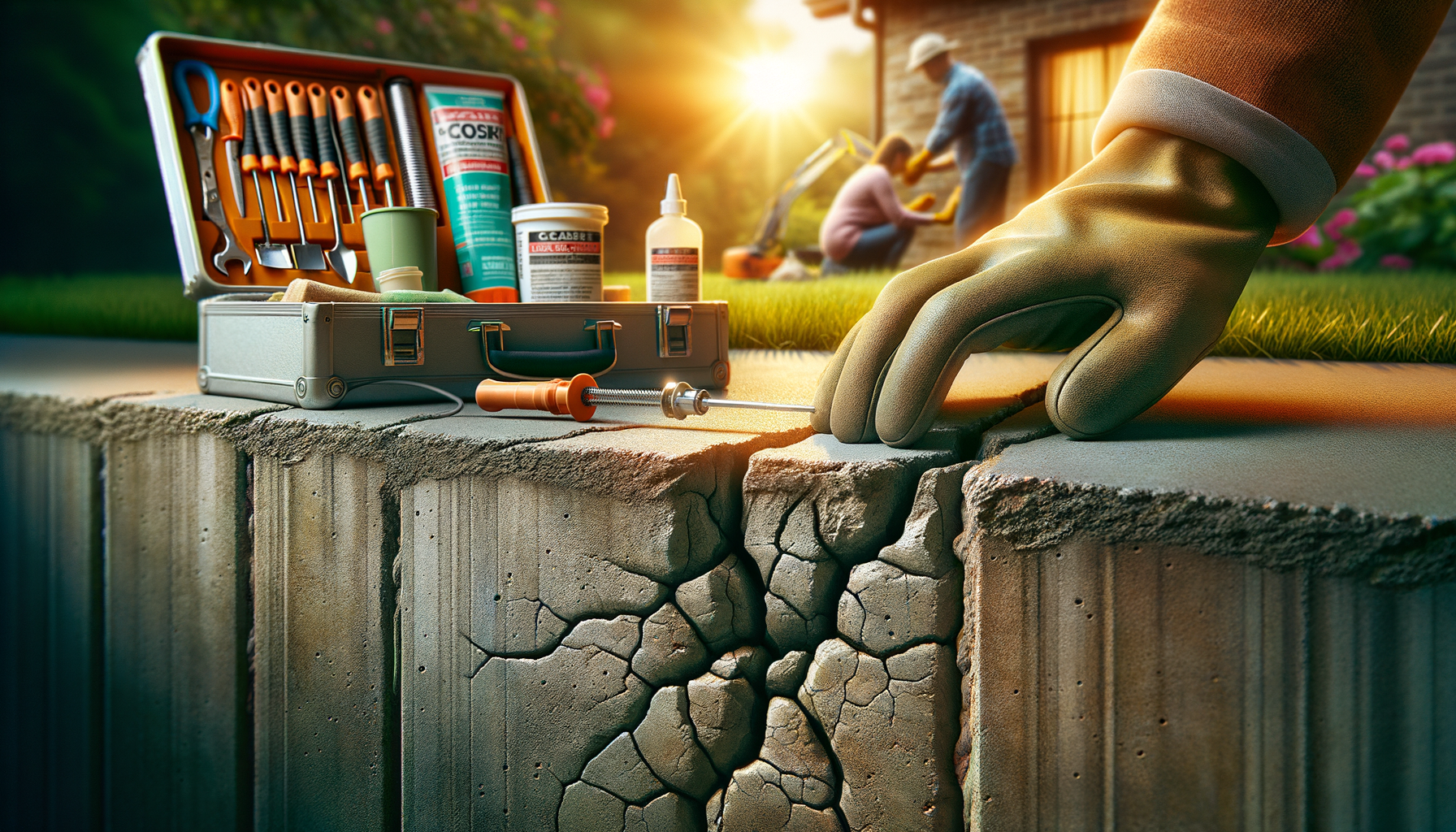Fixing cracks in your concrete foundation is really important if you want to keep your home strong and safe. If you take care of these cracks early, you can avoid bigger and more expensive problems later. This guide will help you understand why cracks happen, how to spot them, and how to fix them.
Why Concrete Foundation Cracks Happen
Natural Settlement
- What It Is: Over time, the soil under your house moves a bit, making the foundation shift and sometimes crack.
- Result: Small cracks called hairline cracks happen because of this. It’s pretty normal in most houses.
Weather Conditions
- Freeze-Thaw Cycles: In Canada, cold winters cause water to freeze and expand, making cracks bigger.
- Temperature Changes: Hot and cold weather can weaken concrete and cause it to crack.
Poor Construction Practices
- Wrong Concrete Mix: If the concrete mix is wrong or if it’s not allowed to set properly, it gets weak and cracks more easily.
- Bad Workmanship: If builders cut corners, the foundation won’t be as strong and can crack sooner.
Spotting Different Types of Foundation Cracks
Hairline Cracks
- What They Look Like: Very thin cracks, usually less than 1/16 inch wide.
- Why They Happen: Usually because the concrete shrinks a bit as it dries.
Vertical Cracks
- What to Look For: Cracks that go up and down the wall.
- What They Mean: They could mean the house is settling a bit but are usually not too serious.
Horizontal Cracks
- Seriousness: These are more serious and can mean there’s a lot of pressure pushing on the walls.
- What They Show: The wall is bowing inward because of pressure from outside.
Diagonal Cracks
- What Causes Them: Uneven settling of the foundation or different pressures in the soil.
- Risks: These can mean there’s been a lot of movement and should be watched closely.
When to Call a Professional
Size and Spread
- Guidelines: If a crack is wider than 1/4 inch or keeps growing, you should ask a professional to check it out.
- Severity: Pros can tell you if a crack means there’s a bigger problem.
Water Leakage
- Detecting Moisture: If water is coming in through a crack, fix it fast to stop further damage.
- Risks: Water can cause mold and harm the foundation’s strength.
Structural Integrity
- Signs: Walls that bow, floors that are uneven, and doors or windows that stick can mean big problems.
- Action: You should call an engineer or foundation expert if you see these signs.
DIY Concrete Foundation Crack Repair: What You Can Do
Materials Needed
- Epoxy or polyurethane injection kit
- Hydraulic cement and concrete patching mix
- Crack repair sealant
Step-by-Step Process
Clean the Crack
- Action: Use a wire brush and a vacuum to clean out debris and dust from the crack.
- Purpose: Cleaning makes sure the repair materials stick well.
Prepare the Injection Kit
- Instructions: Follow the steps on the kit to mix and get it ready.
- Safety: Wear gloves and safety glasses.
Seal the Crack
- Application: Fill the crack with the epoxy or polyurethane from the kit.
- Technique: For deep cracks, you might need to inject multiple times to fill it all the way.
Allow Proper Curing Time
- Importance: Follow the product’s instructions on how long to let it harden.
- Time Frame: This can take anywhere from a few hours to a couple of days.
Professional Repair Techniques
Crack Stitching
- Reinforcement: Metal rods or staples are used to support the crack.
- Efficiency: Good for bigger, more serious cracks.
Carbon Fiber Straps
- Strengthening Walls: These straps keep cracks from spreading and walls from bowing.
- Durability: They provide long-lasting support without taking up much space.
Soil Stabilization
- Process: Putting materials into the soil around the foundation to stop it from moving.
- Benefit: Helps fix the root cause of foundation problems.
Preventative Measures to Avoid Future Cracks
Improve Drainage
- Rainwater Runoff: Make sure gutters and downspouts direct water away from the foundation.
- Avoiding Puddles: Prevent water from pooling near the foundation with longer downspouts.
Soil Grading
- Slope Adjustments: Make the soil slope away from the house to stop water from building up.
- Landscaping: Use plants and landscaping to help with good drainage.
Regular Maintenance
- Inspections: Check for small cracks and other issues regularly.
- Minor Repairs: Fix small problems right away so they don’t get worse.
Costs and Budgeting for Foundation Crack Repair
DIY Costs
- Average Price: Kits usually cost between $50 to $150.
- Materials: Extra materials like hydraulic cement are also affordable.
Professional Services
- Pricing Factors: Costs depend on how bad the damage is, where you live, and contractor rates.
- Range: Professional repair can cost from a few hundred to several thousand dollars.
Long-Term Savings
- Timely Repairs: Fixing cracks early saves you more money later.
- Investment: A strong foundation keeps your home safe and valuable.
Resources for Homeowners
Helpful Websites and Forums
- Foundation Repair Info: Websites that teach you about foundation maintenance.
- Community Support: Forums where you can ask questions and get advice from other homeowners.
Recommended Products
- Top-Rated Kits: Epoxy and polyurethane kits with good reviews.
- Materials: Hydraulic cements and sealants that work well.
Finding Trusted Professionals
- Tips: How to find good foundation repair contractors in Canada.
- Recommendations: Steps to check their credentials and get quotes.
Learning about concrete foundation crack repair helps you fix problems early and keep your home safe. By being informed and taking action, you can stop small cracks from becoming big issues.


Leave a Reply